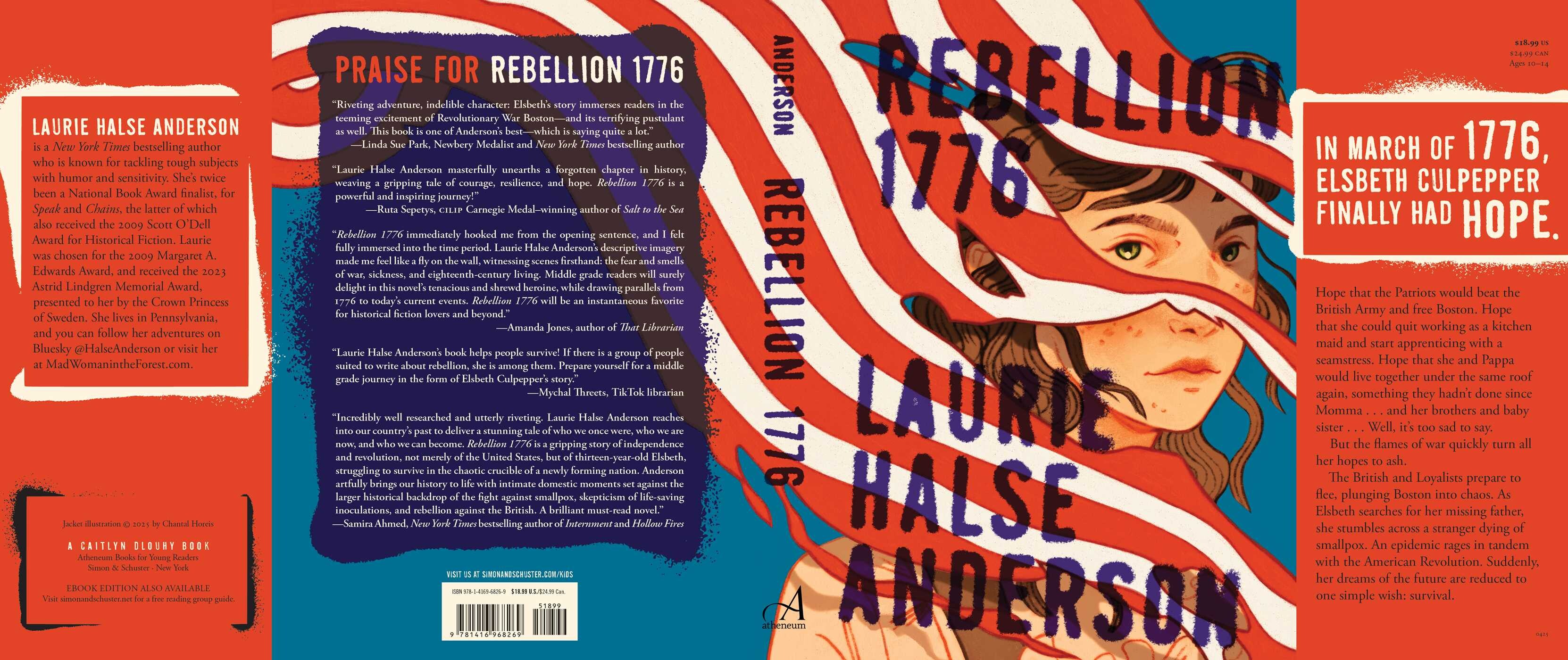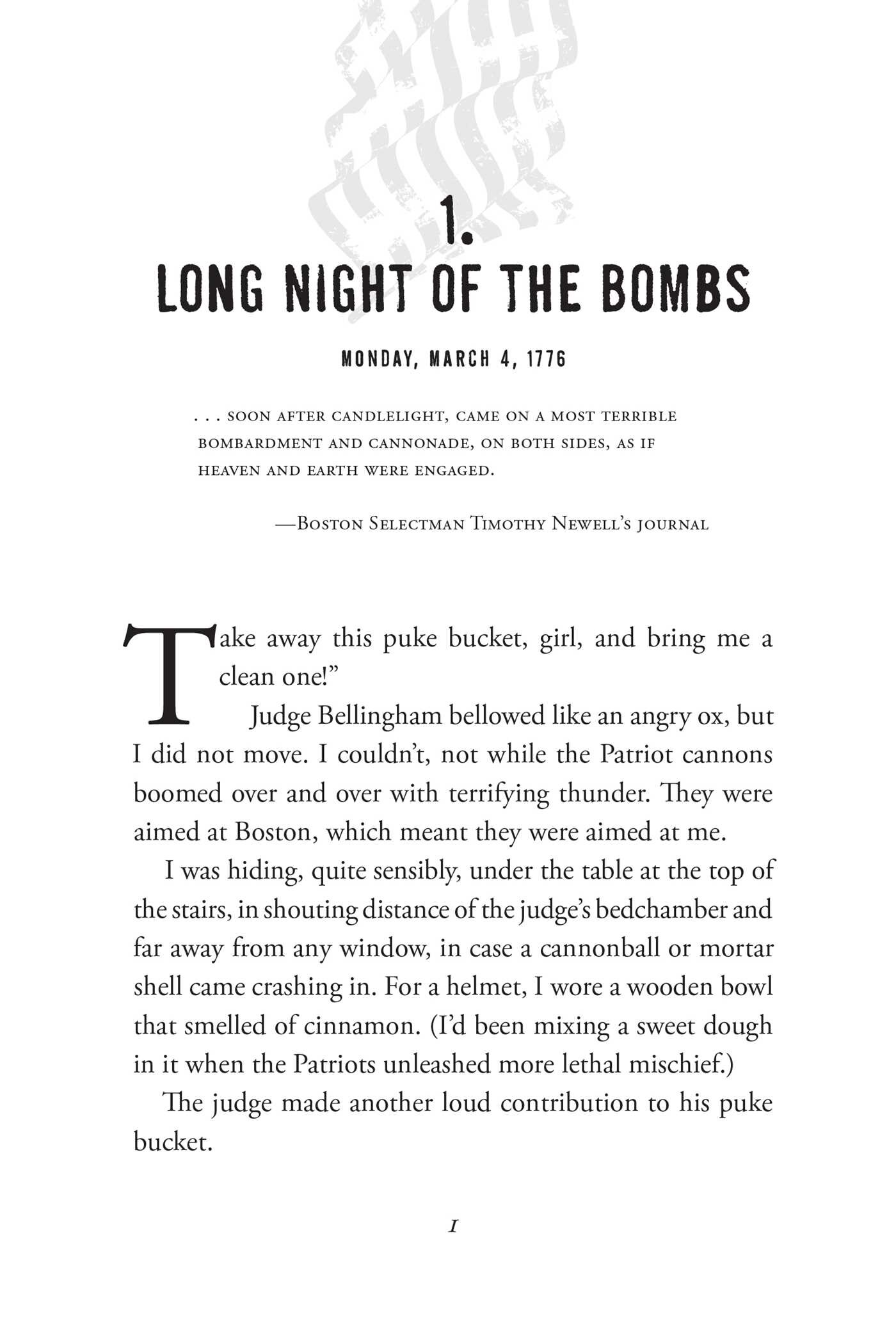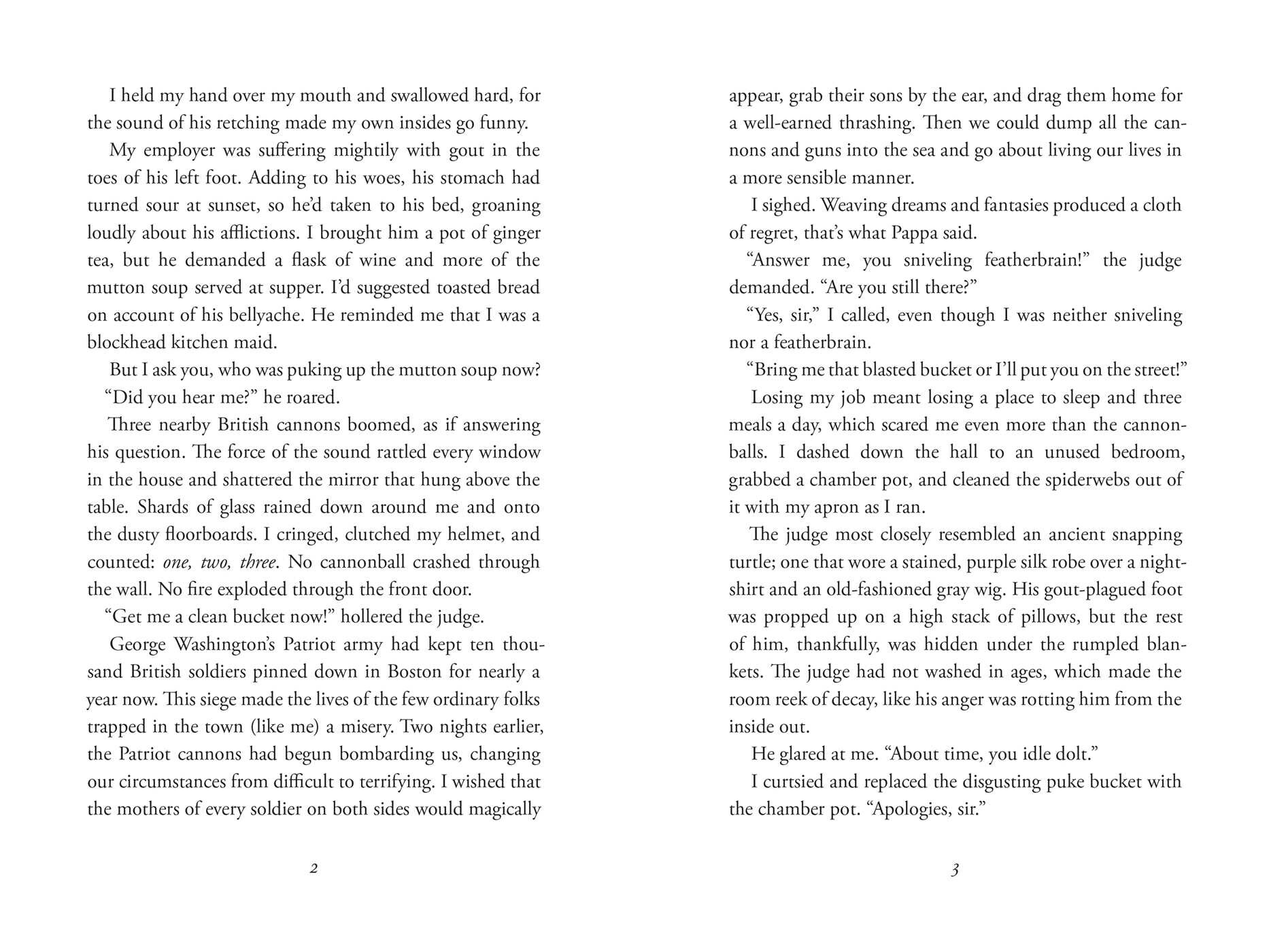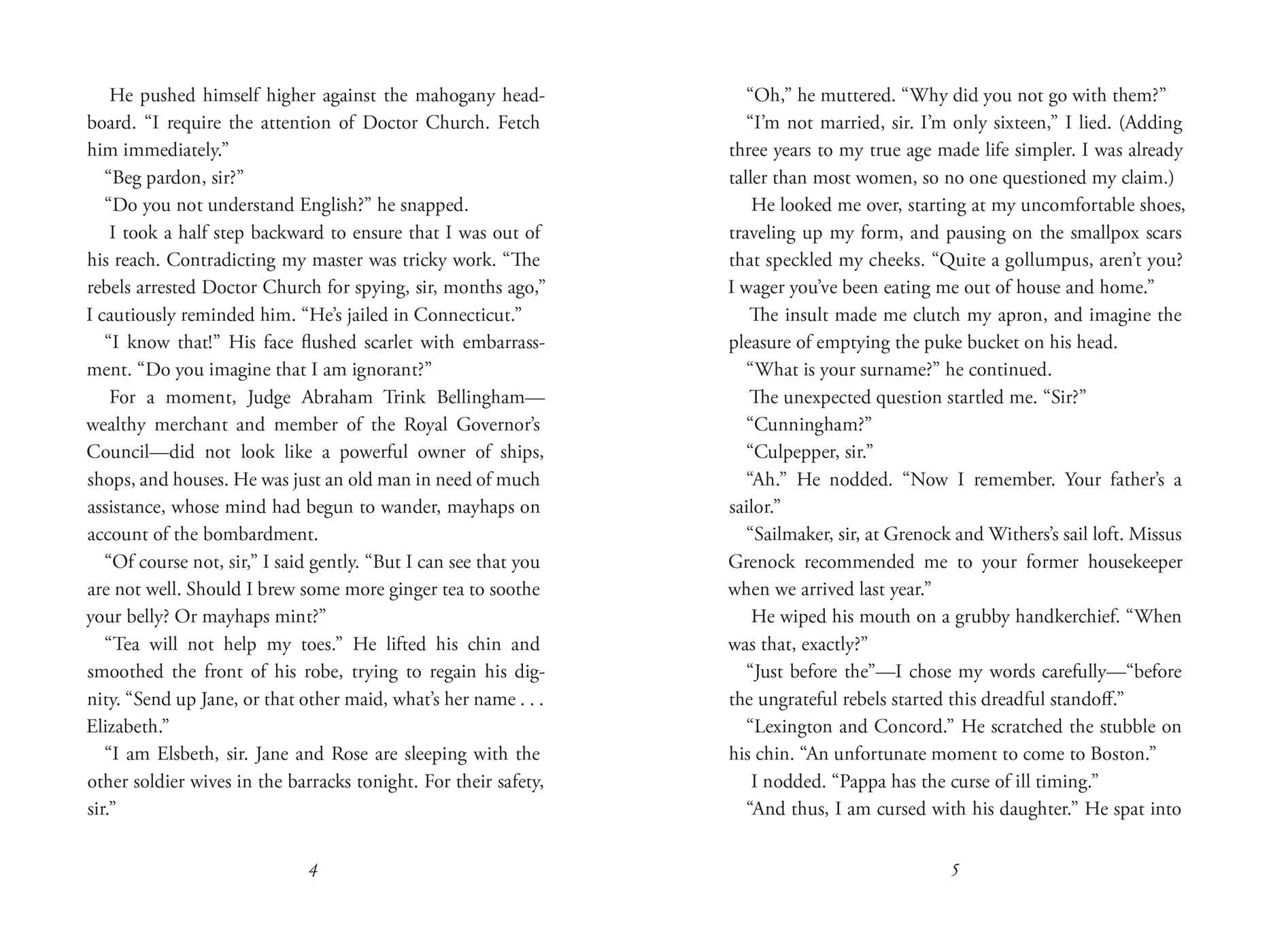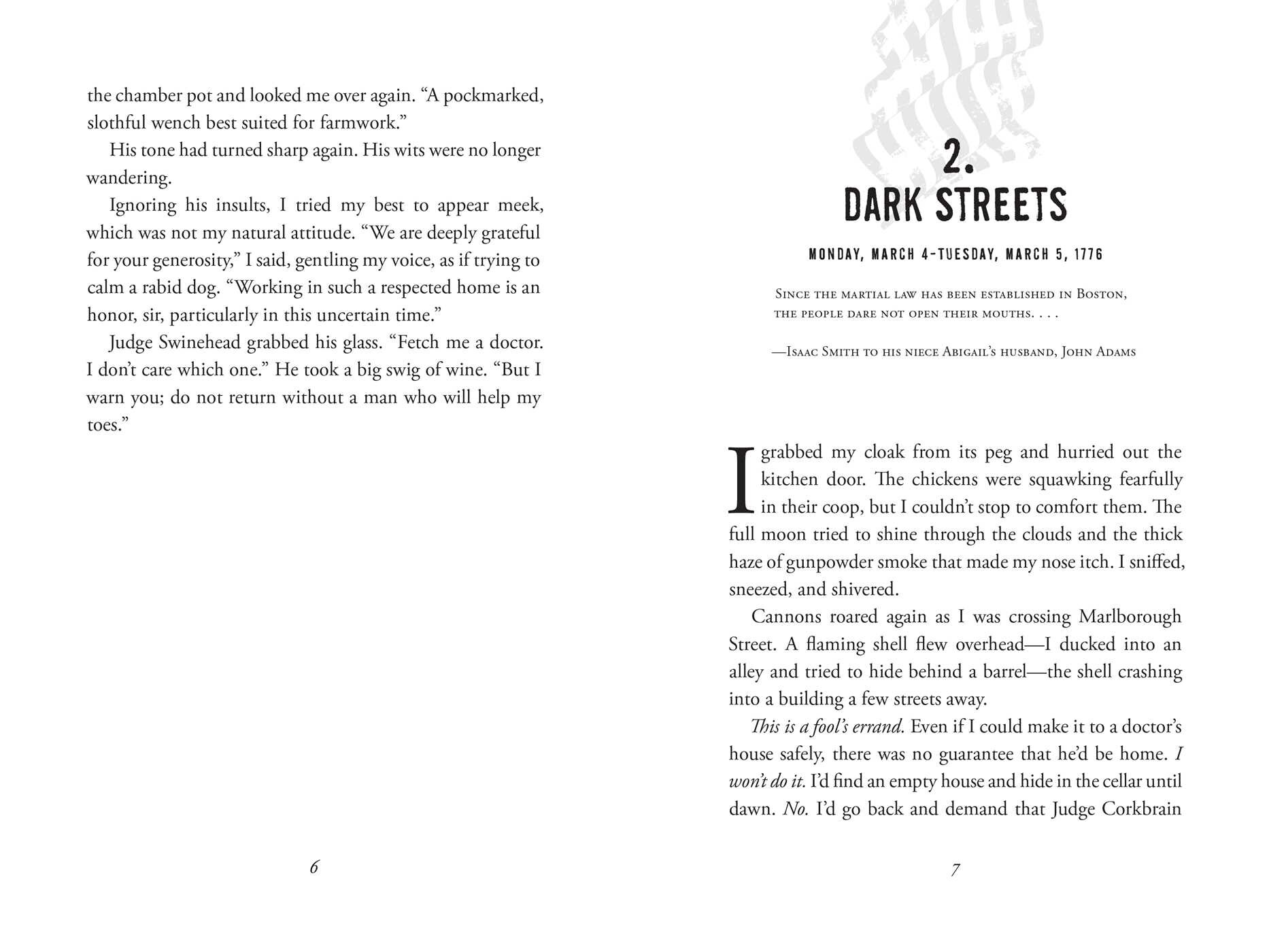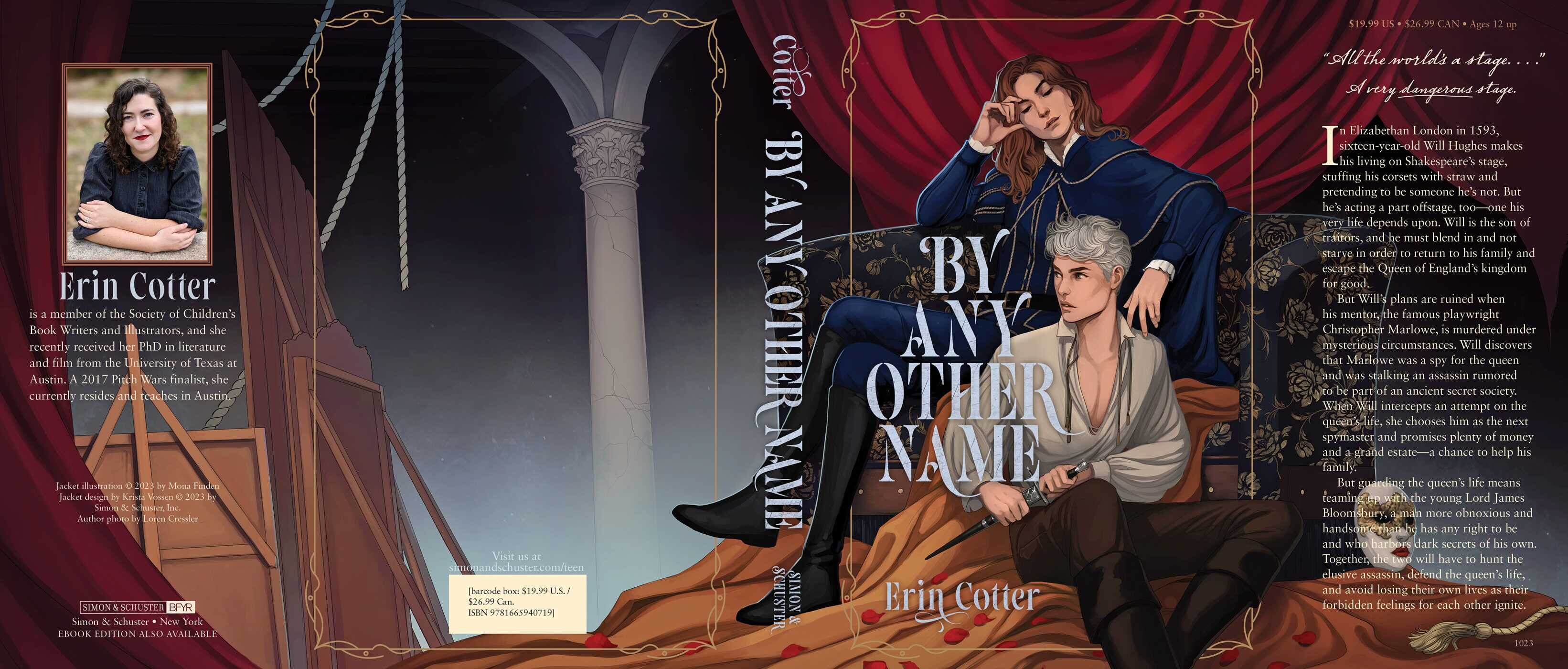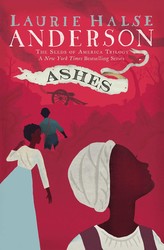Rebellion 1776
LIST PRICE $18.99
Free shipping when you spend $40. Terms apply.
Buy from Other Retailers
Table of Contents
About The Book
In the spring of 1776, thirteen-year-old Elsbeth Culpepper wakes to the sound of cannons. It’s the Siege of Boston, the Patriots’ massive drive to push the Loyalists out that turns the city into a chaotic war zone. Elsbeth’s father—her only living relative—has gone missing, leaving her alone and adrift in a broken town while desperately seeking employment to avoid the orphanage.
Just when things couldn’t feel worse, the smallpox epidemic sweeps across Boston. Now, Bostonians must fight for their lives against an invisible enemy in addition to the visible one. While a treatment is being frantically fine-tuned, thousands of people rush in from the countryside begging for inoculation. At the same time, others refuse protection, for the treatment is crude at best and at times more dangerous than the disease itself.
Elsbeth, who had smallpox as a small child and is now immune, finds work taking care of a large, wealthy family with discord of their own as they await a turn at inoculation, but as the epidemic and the revolution rage on, will she find her father?
Reading Group Guide
Rebellion 1776
By Laurie Halse Anderson
Prereading Activity
1. Discuss the difference between a primary and a secondary source.
2. Read about the Siege of Boston on this website from the Massachusetts Historical Society: https://www.masshist.org/online/siege/index.php. Which type of source are the eyewitness accounts?
3. How does Laurie Halse Anderson make use of primary sources at the beginning of each chapter? Primary sources are considered the “raw materials” of history. Split the class or group into two, then have one team create a list of examples of what would be considered a primary source, and the other team create a list of secondary source examples.
Discussion Questions
1. “Conflict” in a novel is the struggle or problem to be solved. It may be internal, external, or both. What is the conflict within Elsbeth Culpepper? Discuss the external conflict that she faces. How are these conflicts resolved?
2. The antagonist in a work of historical fiction is usually the “bad guy” who stands in the way of the main character. Identify the antagonists in Rebellion 1776. Debate whether the raging rebellion in Boston and the smallpox epidemic may be considered antagonists.
3. What are Elsbeth Culpepper and her father seeking when they move from Philadelphia to Boston? Discuss what they find upon their arrival. How does this change the life they had planned for themselves?
4. Elsbeth’s father is a sailmaker, and he works at the sail loft of Grenock and Withers. Her father never reveals which side of the war he favors. Why is it difficult to stay neutral in Boston at this time? Discuss the circumstances of his disappearance. How does he find his way back to Boston by the end of the novel?
5. Elsbeth Culpepper has been taught that lying is a sin. So why does she lie about her age when she seeks employment at the home of Judge Bellingham? What other lies does she tell, and how does she justify them? Elsbeth says, “One of the many advantages of being a practiced liar was that my ears were sharply tuned to the falsehoods of others.” (Chapter fifteen) Discuss her intuition about the character of Captain Hunter and of Billy Rawdon.
6. Describe the life of a serving girl. Judge Bellingham, a loyalist, flees Boston after the British admit defeat. Why does Elsbeth’s father insist that she stay at the Bellingham house? What forces her to leave?
7. How does Elsbeth end up working for Mister Pike, a shipping tycoon? Explain what Mister Pike means, “‘How remarkable, two rebellious towns in one girl.’” (Chapter seven) Describe Widow Nash, the family’s cook. How do things change when Missus Pike and their seven children arrive?
8. Hannah Sparhawk lives with the Pikes while her guardian, Captain Hunter, is away. What is Elsbeth’s first impression of Hannah? Explain what Elsbeth means, “She [Hannah] was the most puzzlingest person I’d ever met.” (Chapter thirteen) Why does Elsbeth call Hannah a “kindred spirit”?
9. Elsbeth becomes the personal maidservant to Hannah. What are her duties? Explain what she means, “Hannah Sparhawk was the exact opposite of Widow Nash, in the way that summer was to winter or sunshine to rain.” (Chapter eighteen)
10. How does Hannah find out that her grandmother is dead? Why didn’t Missus Pike tell her? Explain how Hannah feels betrayed by Missus Pike. Describe how Elsbeth supports Hannah.
11. Discuss the rules for women and girls in eighteenth-century Boston. How does Elsbeth challenge the rules? Elsbeth goes to the sail loft of Grenock and Withers to see her father. He forbids her to come there again and calls her “‘ignorant of the evils of the world.’” (Chapter four) To what evils is he referring? Cite other times in the novel when her unworldliness gets her in trouble.
12. What is the first clue that the Pikes are broke? Cite evidence that Captain Hunter has the Pikes under his complete control. Why does Elsbeth suspect that the Pikes’ marriage is in “its own sort of battlefield”? (Chapter twenty)
13. Describe Elsbeth’s first encounter with Nyott Doubt. Which side of the war is Doubt on? How do his loyalties confuse Elsbeth? Debate whether his loyalties change as the novel progresses. How does Elsbeth know Mister Doubt has eyes for Hannah?
14. Define epidemic. Describe the smallpox epidemic that is raging in Boston during the novel. How does the city attempt to control the epidemic? Explain what Elsbeth means, “But smallpox interfered with death as much as life.” (Chapter forty)
15. Doctor Crookshank is inoculating patients against smallpox. Describe the procedure. Why is Missus Pike so against inoculation? Explain why Elsbeth doesn’t need to be inoculated. Discuss Elsbeth’s attention to Missus Pike and the children as they become ill after receiving the inoculation. How is she devoted to Hannah in the days leading up to her death?
16. Elsbeth is summoned to a meeting of the Committee of Correspondence, Inspection, and Safety. What is the purpose of the meeting? How does she deduce that Widow Nash is behind this meeting? What makes Widow Nash so sure that Elsbeth is a spy? Explain what happens in the meeting.
17. Discuss what Elsbeth means when she calls Shubel Kent her “boon companion.” (Chapter three) At what point does she fall in love with him?
18. What is the central theme of the novel? Discuss the secondary themes.
Extension Activities
1. Explore and define the differences between inoculation and vaccination. Based on the information gathered, create a Venn Diagram that explains your understanding of the differences in the two procedures, putting any similarities in the overlapping space. Afterward, discuss which of the procedures Dr. Crookshank administers on the Pike family and other citizens of Boston in Rebellion 1776. Why do many people resist his procedure? Research Dr. Edward Jenner, the man credited with developing the smallpox vaccine, on the following website: https://pmc.ncbi.nlm.nih.gov/articles/PMC1200696/. Write a paragraph for a health textbook that discusses how his work eventually eradicated smallpox. Why is his work considered the “foundation of immunology”?
2. Read about the history of the smallpox vaccine on the following website: https://www.who.int/news-room/spotlight/history-of-vaccination/history-of-smallpox-vaccination. Then create a timeline of the vaccine’s development and its use in the United States. Make note of when the last smallpox vaccine was administered. Debate whether it’s likely that smallpox could reemerge in our society.
3. In 1855, Massachusetts became the first state to require that children receive the smallpox vaccine before attending school. Write a letter that the school system might have sent to parents explaining the decision that all school children be vaccinated.
4. Explain why Missus Pike doesn’t approve of young ladies talking about newspapers, politics, and pox. Elsbeth is very much in support of the smallpox vaccine and shares her opinion publicly. Prepare and deliver a speech that Elsbeth might give about the importance of being vaccinated. Make reference to her losing family and friends to the disease.
5. Elsbeth says, “Momma had raised me to do hard things, especially when I didn’t want to.” (Chapter six) Write a letter that Elsbeth might send to Pappa relating the hardest thing she has had to do while living in the Pike household.
6. Historical figures like George Washington, Benjamin Franklin, and Thoman Jefferson are mentioned in the book. Women also played a prominent role in the war. Research one of the following women:
a. Abigail Adams
b. Martha Washington
c. Deborah Sampson
d. Phillis Wheatley
e. Mercy Otis Warren
f. Laura Collins Wolcott
g. Prudence Cummings Wright
Prepare a visual presentation, or write a brief biographical paper about her role in the American Revolution. Include a conclusion that discusses what Elsbeth Culpepper would most admire about this particular female figure.
7. Write a feature article for The Continental Journal about the celebration in Boston on the day the colonies declared independence. Remember to include Who, What, When, and How. Include interviews with Elsbeth Culpepper, Tabitha Pike, Missus Wheeler, Missus Pike, and Shubel Kent.
8. Tabitha Pike considers herself an expert on democracy. Use books in the library or trusted sites on the internet to research the basic tenets of a democratic government. Then write a short paper titled “Democracy and a New Nation” that Tabitha might write for The Continental Journal.
9. Elsbeth says that Billy Rawdon reminds her of a “cunning fox, devious and sly.” (Chapter twenty-five) Discuss the following idioms:
a. Wise as an owl
b. Strong as a bear
c. Fierce as a lion
d. Stubborn as a mule
e. Free as a bird
f. Eyes like a hawk
Select one character from the novel and write a one-page essay that explains which idiom best describes that character. Cite specific scenes or quotes from the novel to support your thoughts.
10. Consider the relationship between Hannah and Elsbeth, and write a eulogy that Elsbeth might deliver at Hannah’s graveside.
Vocabulary and Use of Language
Have students jot down unfamiliar words and define them, taking clues from context. Such words may include:
- lethal (p. 1)
- auspicious (p. 14)
- insolent (p. 68)
- perilous (p. 73)
- perambulate (p. 77)
- desolation (p. 125)
- odious (p. 140)
- demoralizing (p. 161)
- inoculate (p. 178)
- pectoral (p. 327)
Guide written by Pat Scales, a retired middle and high school librarian who is currently a children’s and young adult literature consultant and specializes in curriculum and free speech issues.
This guide has been provided by Simon & Schuster for classroom, library, and reading group use. It may be reproduced in its entirety or excerpted for these purposes
Product Details
- Publisher: Atheneum/Caitlyn Dlouhy Books (April 1, 2025)
- Length: 416 pages
- ISBN13: 9781416968269
- Ages: 10 - 14
Raves and Reviews
[I]ts themes echo our current tensions: vaccine detractors versus promoters, royalists versus patriots, misogyny versus feminism, old ways of living and loving versus new ways of being true to oneself. [...] There is a fair bit of skulduggery as well — stolen fortunes, false accusations, thefts, betrayals — that adds mystery and suspense.. [...] Filled with immersive detail, expert delineations of complex characters, and both harsh and loving reality, “Rebellion 1776” provides young readers with a true experience of a historic moment in time that resonates with today’s world. To use Elsbeth’s celebratory last word, “Huzzah!”
– New York Times , 3/21/25
One of the narrative’s strengths is Anderson’s ability to create realistically flawed yet often appealing characters and relationships; another is how fully and sensitively she portrays the female characters’ reactions to the limited rights and roles of women in their society. Each chapter opens with a short, relevant quote from the correspondence, journals, or diaries of a notable such as Abigail Adams, John Adams, Ben Franklin, or George Washington. A thoroughly researched, emotionally resonant historical novel.
– Booklist, STARRED Review, 02/01/2025
This well-crafted novel by Anderson (Shout) opens in March 1776, on the eve of the Loyalists’ forced evacuation of Boston. Period details of daily life during the events of the founding of the United State immerse readers in the era, and plot points become compellingly relevant to contemporary times when Boston is hit by the smallpox epidemic and controversies about inoculation abound.
– Publishers Weekly, 2/3/2025
Told through Elsbeth’s clever, feminist, often-humorous perspective, this original and timely story immerses readers in her observations on an epidemic and vaccination, early American politics and society, and the meaning of family. Engrossing, entertaining, and heartfelt.
– Kirkus, 02/1/25
Another masterly account of colonial life from Anderson. [...] The plot is action-packed, reflecting the unprecedented times of the era. Each chapter opens with a quote from a contemporary historical figure, cementing the sense of time and place. Colorful dialogue, including period-accurate insults, i.e., “dunderhead” and “numbskull,” add authenticity. [...] Readers can draw several parallels between Elsbeth’s life and modern times, such as the debate over smallpox inoculation. [...] A must-buy for historical fiction collections, especially where Anderson’s Chains and Fever 1793 are popular.
– School Library Journal, 3/1/25
Resources and Downloads
Activity Sheets
High Resolution Images
- Book Cover Image (jpg): Rebellion 1776 Hardcover 9781416968269
- Author Photo (jpg): Laurie Halse Anderson (c) Susanne Kronholm(0.1 MB)
Any use of an author photo must include its respective photo credit


